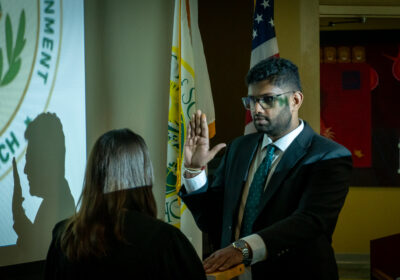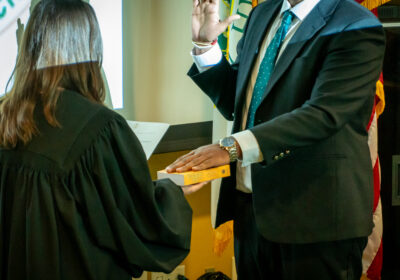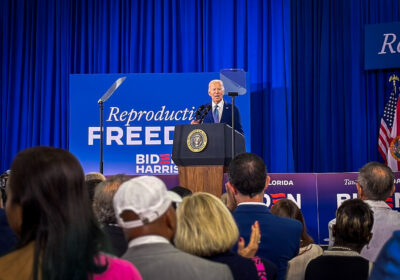USF answers governors letter with in-depth report
When Gov. Rick Scott had questions, USF had 106 pages worth of answers.
The governor posed 17 questions to all State University System (SUS) presidents last month to see how their goals align with his newly announced job creation plan, which focuses on expanding businesses and increasing science, technology, engineering and math (STEM)majors.
The universities were given until Tuesday to submit their responses, University spokesman Michael Hoad said. He said the universities wanted to make sure they presented similar work plans to the governor, and “there was some coordination.” USF not only sent responses to each question, but also a narrative detailing the specifics of Scott’s requested data and any supporting documents from each of its four satellite campuses that were applicable, Hoad said.
“USF wholeheartedly supports your efforts to create high-paying jobs for Floridians and sees ourselves as a key ally of yours in that fight,” USF President Judy Genshaft wrote to Scott in the letter. Though the response was lengthy, Hoad said USF’s Office of Decision Support and Strategic Planning had no trouble gathering the data Scott asked for.
“That’s why you see so much detail,” he said. “Because the metrics do, in fact, exist.”
Most of Scott’s questions were met with responses that suggested the University had long been keeping his goals in mind.
“Do you have measurable goals to meet employers’ current needs?” Scott asked.
“Yes,” USF responded, and provided an eight-page breakdown of its goals.
“Do you have measurable goals for the number of graduates with specific degrees such as science, technology, engineering, mathematics, nursing, etc.?” Scott asked.
“Yes,” USF responded, and sent Scott a list of the number of STEM degrees awarded since 2001.
However, there were some requests USF could not fill.
“Do you have measurable goals for the number of graduates who remain in Florida post-graduation?” Scott asked. “If so, please send me the goals and the results for the last five to 10 years.”
USF responded by saying that, though no formal assessment system currently exists, USF contributes to the state economy and data shows about 80 percent of USF graduates remain in Florida after graduation.
“While USF strives to serve the State of Florida, its educational focus extends far beyond its borders while, at the same time, elevating the reputation of Florida’s SUS as an international force in higher education,” the letter states. “Having no stated goals for the number of students remaining in Florida, therefore, in no way diminishes the impact of the University on Florida’s economy.”
The governor also asked the University to provide a list of the 50 highest paid employees and their job descriptions.
The university provided a list of the 50 highest paid instructional faculty members, with the highest salary at $412,000 – less than half the salary of some administrative positions.
Hoad said the list was only comprised of employees paid exclusively through state funds and therefore did not include higher paid administrators. Other sources of salary funding for those positions, he said, include contracts with hospitals for some Moffitt employees, physicians’ practices, athletics funds and “gifts.”
Scott asked if the University completed a “360-degree review,” an evaluation system often used by businesses, of their Board of Trustees members. USF saidit did not, but it conducts annual workshops with similar goals.
Hoad said USF is prepared to answer any future questions from the governor.
“We feel like we’re a long way ahead because we have the metrics to prove our actions are in line with our vision and strategic plans,” he said.
The Board of Governors (BOG) announced a strategic plan Tuesday with new ambitious goals in recruiting and increasing bachelor’s degrees, particularly science, technology, engineering and math (STEM) programs.
According to a BOG press release Tuesday, BOG members approved of their strategic plan for 2012-25.
The release stated that the BOG’s Strategic Plan for the State University System (SUS) of Florida: 2012-25 “includes such ambitious targets as increased degree production at all levels, especially for minorities and STEM.”
In addition, the release stated that the SUS “awards more than 53,000 baccalaureate degrees each year. The 2025 goal is 90,000 a year, in order to raise the state-level attainment of degreed citizens.”
The BOG also wants all universities to achieve Carnegie’s Community Engagement Classification, which seven of the state’s 11 schools, including USF, currently meet, and increase the number of high school students who were in the top 10 percent of their class from 28 percent to 50 percent by 2025.
– Staff Report






